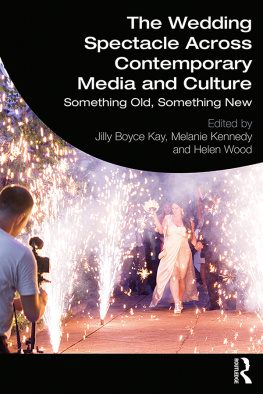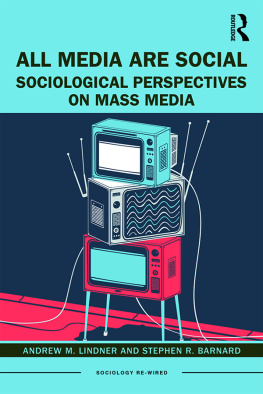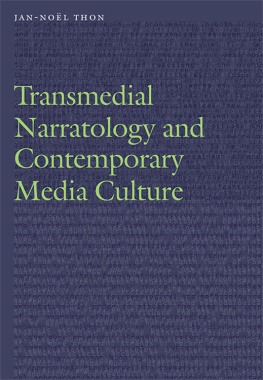
Lifestyle Media in American Culture
This book explores the emergence of lifestyle in the US, first as a term that has become an organizing principle for the self and for the structure of everyday life, and later as a pervasive form of media that encompasses a variety of domestic and self-improvement genres, from newspaper columns to design blogs. Drawing on the methodologies of cultural studies and feminist media studies, and built upon a series of case studies from newspapers, books, television programs, and blogs, it tracks the emergence of lifestyles discursive formation and shows its relevance in contemporary media culture. It is, in the broadest sense, about the role played by the explosion of lifestyle media texts in changing conceptualizations of selfhood and domestic life.
Maureen E. Ryan is an instructor in media and cinema studies at DePaul University, USA. She is the co-editor, with Jessalynn Keller, of the collection Emergent Feminisms: Complicating a Postfeminist Media Culture.
Routledge Research in Gender, Sexuality, and Media
Edited by Mary Celeste Kearney, University of Notre Dame
Queercore
Queer Punk Media Subculture
Curran Nault
Lifestyle Media in American Culture
Gender, Class, and the Politics of Ordinariness
Maureen E. Ryan
Lifestyle Media in American Culture
Gender, Class, and the Politics of Ordinariness
Maureen E. Ryan
First published 2018
by Routledge
711 Third Avenue, New York, NY 10017
and by Routledge
2 Park Square, Milton Park, Abingdon, Oxon OX14 4RN
Routledge is an imprint of the Taylor & Francis Group, an informa business
2018 Taylor & Francis
The right of Maureen E. Ryan to be identified as author of this work has been asserted by her in accordance with sections 77 and 78 of the Copyright, Designs and Patents Act 1988.
All rights reserved. No part of this book may be reprinted or reproduced or utilised in any form or by any electronic, mechanical, or other means, now known or hereafter invented, including photocopying and recording, or in any information storage or retrieval system, without permission in writing from the publishers.
Trademark notice: Product or corporate names may be trademarks or registered trademarks, and are used only for identification and explanation without intent to infringe.
Library of Congress Cataloging-in-Publication Data
A catalog record for this book has been requested
ISBN: 978-1-138-20646-5 (hbk)
ISBN: 978-1-315-46497-8 (ebk)
Typeset in Sabon
by Apex CoVantage, LLC
This book was written without any institutional support, and from a precarious position within academia. Because of this, I am grateful beyond measure to the colleagues, mentors, and friends who helped me in different ways throughout its writing. Thanks to my colleagues from Northwesterns Screen Cultures PhD program, who read versions of these chapters and provided insights, suggestions, and a lifeline of camaraderie: Linde Murugan, Leigh Goldstein, Katie Day Good, Stephen Babish, Zachary Campbell, Alex Thimons, Gry Rustad, and Reem Hilu. Thank you to Janice Radway for her mentorship and her belief in my work over the years. Brendan Parent and Jessie Roy also provided invaluable feedback and friendship. Thank you to my editor Felisa Salvago-Keyes, series editor Mary Kearney, and editorial assistant Christina Kowalski for their support and dedication to this project. Huge thanks to Kasia Houlihan for her beautiful cover photograph. Peter Kersten at Getty Images is a total champ. Thank you to Lynn Spigel, Jacob Smith, Molly Schneider, Mabel Rosenheck, Andy Owens, and Roger Almendarez-Jimenez for providing invaluable feedback and support when this project was a dissertation. Chaz Evans is ever my biggest supporter, most helpful reader, and cherished partner. Finally, thanks to my mother, whose subscription to Victoria magazine may have started it all.
The Lifestyle Mafia
In my quest to be president of the lifestyle mafia I have decided that my bathroom things need to be prettier. This seems to imply that the lifestyle mafia is an elite group of tastemakers who, like the popular girls in high school, judge how well one adheres to prevailing aesthetics. This season, shiny new LG appliances, blush bathroom accessories, and spotless glass-front cabinets fit the bill.
If anyone is qualified to be the head of the lifestyle mafia, it is surely Henderson. The blonde, Los Angelesbased blogger and designer was made famous as the winner of HGTVs Design Star competition in 2010, went on to host Secrets from a Stylist (HGTV, 20112012), and is now the face of Targets home dcor line. Yet even she feels that her admission into this elite and possibly dangerous group is not guaranteed. Hendersons sense that there is a lifestyle mafia, ruthlessly policing our tastes and curbing our inclination to let our kitchen shelving go to seed, indicates the degree to which ideas about lifestyle and representations of beautiful lifestyles have become all-encompassing in media today. Lifestyle media such as Hendersons blog marry scenes of ordinary lifekitchen cupboards and bathroomsto consumption through affective attachments. They transform ordinariness into something richly inviting, even transcendent. Most of all, they tie ordinariness and consumption to ideas about social life and authentic social relations with others.
This book explores the history of lifestyle media, and the different ways that they have presented ideals of everyday domestic life to audiences since the 1960s. It also charts the ways in which, since then, lifestyles have become both easier and harder to come by. Lifestyles are easier to come by in the sense that lifestyle experts (the mafiosa) are everywhere: their books, shows, and blogs dispense advice far and wide on choosing curtains and the best holiday tabletop dcor. It is easier in the sense that mass-market retailers like Target now sell design-conscious home goods through collaborations with noted designers like Henderson and Nate Berkus. But they are harder to come by in an economic and social sense. As lifestyle has become dominant in media culture over the past six decades, the affordability of the lifestyles on offer in these media has gradually eroded. This book is, at heart, about the receding availability of middle-class life, and how we continually misrecognize this amid lifestyle medias ubiquitous, optimistic chatter. If we could only get the right shade of blush in our bathroom, we think, our mornings will be happier, our lives richer. Yet this is not a natural or inevitable connection to make. To understand why this is so requires a deeper look at the concept of lifestyle itself, which has since the 1960s become an organizing principle for the self and for the structure of everyday life. It is not simply that lifestyle culture is increasingly popular; it is also the case that lifestyle media, and discussions of lifestyle, are supplanting other forms of culture. For most of televisions history, for instance, cooking, gardening, and home-making shows were locally produced educational fare, often relegated to daytime (i.e. womens) programming blocks. In the last thirty years, however, this kind of content has amped up its production values and been reframed as







